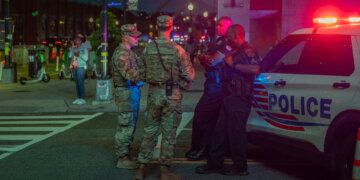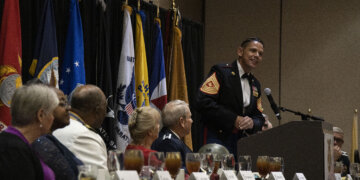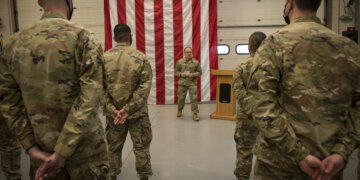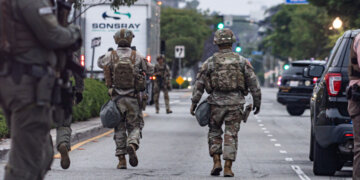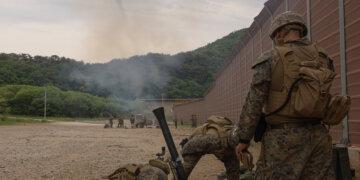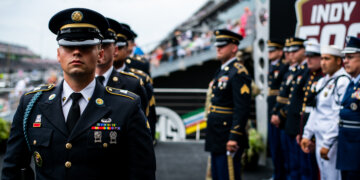In between jokes about the Terminator and Skynet, those who have seen Quad-legged Unmanned Ground Vehicles (Q-UGV) – better known as robot dogs – in action know the technology’s true significance, according to one security forces commander.
“My first gut reaction was a feeling of, ‘This has infinite uses,’” said Lt. Col. Ryan Barton, 142nd Security Forces Squadron commander at the Portland Air National Guard Base. “The following one to that is a swirling of different security forces functions that we could use in a two-fold manner. Can we use this platform in a way to help keep defenders [security forces] safer within the task that we have to do? … Is there a way to incorporate this technology as a means to enhance integrated defense while also knowing that there’s not going to be anymore man power, or resources are getting a little bit limited?”
Beginnings at Beale
Before marking its territory in Portland this past December, the interest in robot dogs was spawned in 2019 while Barton and Maj. Jordan Criss, now of the 325th Security Forces Squadron at Tyndall Air Force Base, were at Beale Air Force Base in California.
“Essentially the robot dog was pitched as an ISR [intelligence, surveillance and reconnaissance] asset and then thrown over our way as, ‘Would this be value added for security forces?’” Criss said.
In May 2019, Ghost Robotics, which created the robot dog, was invited to Beale. And despite Criss and Barton moving on to new bases, the interest in obtaining robot dogs never wavered.
RELATED: Portland Air National Guard Unit is first to test ‘robot dog’ for base security
Tyndall received its Q-UCVs in March 2021 and has seen a “tremendous benefit,” according to Criss. The base provides the opportunity to put the robot “through the rigors of operational use” to determine how it can perform in various conditions.
“We’re able to provide direct feedback and see improvements ranging from how well the robots are sealed to deal with water to how easily robots can be fixed with new and expanded pieces of software and hardware,” he said.
On the National Guard side, Barton applied for innovation funds to purchase a Q-UCV through the National Guard Bureau in April 2021. Within a few months, he said, the base was notified that their application was approved, and the dog was “in hand” that December.
Shaping the future of weapon systems
As the first base to use the technology, Criss said Tyndall is able to “shape the future of employment of these weapon systems” through direct feedback.
“This wasn’t an initiative that started with the intent of being downward directed,” he said. “It started with the ability to be championed from the tactical users, which ultimately produces a much better product for the tactical users themselves.”
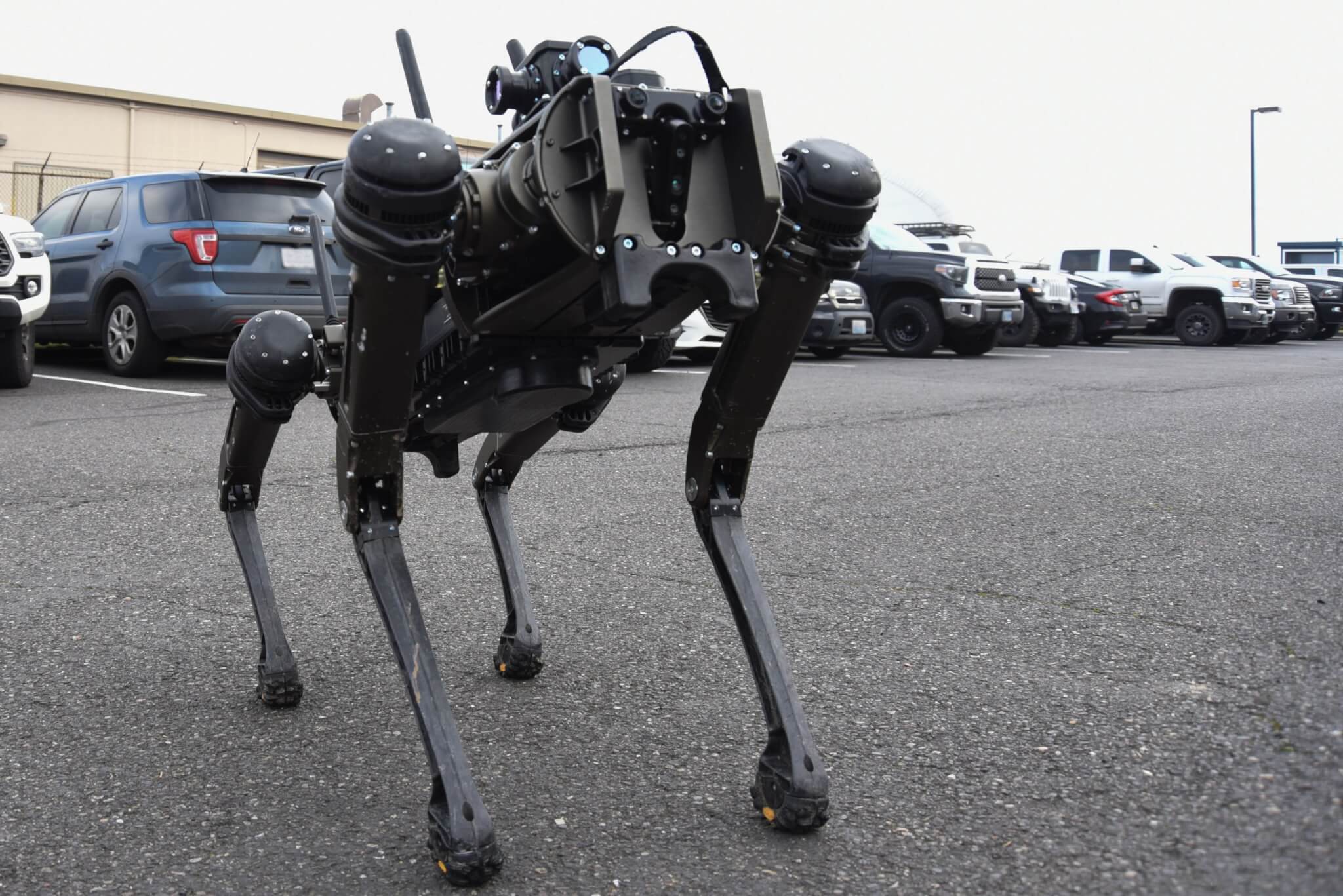
While the dog’s capability is “continuously evolving,” Barton said it’s currently being used in Portland for perimeter security.
“We find areas we think are higher of risk or we’re interested in those areas – things we would like to have eyes on often,” Barton said “… In this case, we have a sensor platform that can do that for us, and in my opinion do it better in some aspects because of the technology.”
Where a human’s mind might wander, the dog remains focused.
“It just sees things in parameters that we’ve plugged into its camera systems and alerts us when it sees those things,” Barton said. “So it’s patrolling, meaning walking on preplanned routes on the installation, and we’re getting a continuous feed through multiple, different types of cameras and sensors.”
User friendly and infinite uses
The dogs, according to Barton, are “very user friendly” and can be controlled through a tablet.
“You can pick up the tablet that controls it, put your thumbs on the joystick and can maneuver it around wherever you want to,” Barton said. “In that, you’re seeing all the feeds from sensors.”
Handlers, however, have about “an eight-hour learning curve” to master how to program routes, troubleshoot and “manipulate the autonomous functions.”
Because the dog is reconfigurable, future uses could include putting a large speaker on it for commands to be spoken through to keep defenders out of harm’s way, Barton said.
Explosives and drug detection are also potential future uses for the dog, according to Barton. And as the capabilities build, he sees them “tying into” other robotic dogs and unmanned aerial systems.
“In essence, the dogs are able to change the environment for the defender and the defender starts to respond,” Barton said.
While there are “a few naysayers,” Barton said the dogs are not a replacement for humans. Rather, an addition that allows humans to be more effective.
“If this could be a catalyst or an example for other units or other agencies to say when you start to think a little bit differently then you’re starting to find a solution that brings us to the future where we need to be,” Barton said. “And I think there’s always a potential to fail and I think that’s okay. Unless you’re trying out things like this, you’ll never get better.”



















